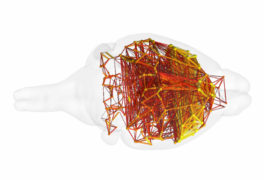‘Into the wild’: Moving studies of memory and learning out of the lab
People with electrodes embedded deep in their brain are collaborating with a growing posse of plucky researchers to uncover the mysteries of real-world recall.

People with electrodes embedded deep in their brain are collaborating with a growing posse of plucky researchers to uncover the mysteries of real-world recall.

Mice with microglia missing receptors for the neurotransmitter serotonin since birth have too many synapses and show social difficulties in adulthood.

Whole-genome sequencing data — which include information about mitochondrial DNA — offer clues to why mutations in the same gene can lead to autism or cancer.

A subset of thalamic neurons support an aspect of social behavior called social recognition, according to experiments in mice.

But the alternatives, including living-brain biopsies, raise logistical and ethical questions, experts say.

Audio and motion-sensor recordings offer a remote window into a baby’s first years and make it easier for families to participate in research.

Autistic children are up to four times as likely as their non-autistic peers to have digestive problems, and several small studies show they may also have atypical microbial communities living in their guts.

Spheres of brain cells derived from people and implanted into mouse brains recruit blood vessels and integrate with mouse neurons.

A trio of drugs eases repetitive behaviors in mice by activating a brain region involved in motor control.

The drug mavoglurant has no effect on a brain circuit involved in social behavior in a mouse model of fragile X syndrome. That may explain its poor performance in people with the condition.